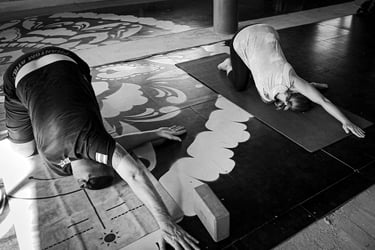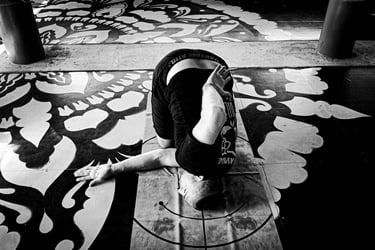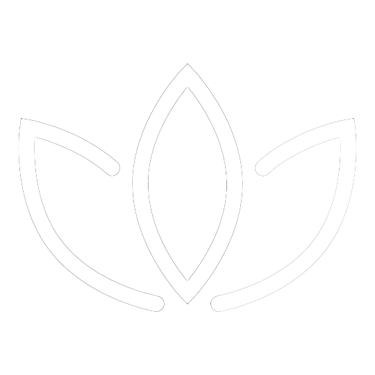Thread the Needle : Stress Relief
The dynamic element of our classes comes into play during these transitions. While static poses challenge our endurance, a sequence of poses teaches us to synchronize our movements with our breath.
Palm in Front of Face : This variation stretches the upper back and shoulders. By reaching one arm underneath your torso and placing the palm on the floor, you create a gentle rotation in the spine, which helps release tightness in the upper back and shoulders. Adding a touch of downward pressure with the palm deepens this rotation, enhancing the stretch, increasing blood flow, and providing more effective relief from tension. This also encourages a gentle release of tight muscles, further improving flexibility and reducing stiffness in the upper back.
Arm Stretched Over Top Ear : Extending the arm over your ear increases the stretch along the side of the neck and shoulder, addressing tightness that often contributes to upper back tension. This variation helps elongate and release muscles along the side of the neck and upper back, promoting better posture and relieving discomfort.
Arm Folded Behind the Back : This modification offers a deeper stretch for the shoulder and upper back. By reaching the arm behind the back, you encourage chest and shoulder opening, helping to release the muscles between the shoulder blades. This variation can also improve shoulder mobility and alleviate stiffness.
Many of us hold stress and tension in our shoulders, neck, and upper back, an area often referred to as the 'stress triangle.'
When we're stressed, our breathing patterns change, often causing our shoulders to hunch up, which can lead to strain and tension in the middle and upper back.
Quick relief for tense muscles can often be achieved by lengthening them and increasing blood flow. Gentle stretches targeting the neck, shoulders, and back not only alleviate pain and stiffness but also improve spinal mobility.
Thread the Needle Pose is an excellent adana for relieving tension in these areas. In our classes, we frequently utilise three classical variations:
These variations are integrated into our Spinal Sequence to enhance flexibility, reduce tension and promote overall relaxation in the upper body.
Since it's also a mild inversion, it encourages blood flow to the upper body, which can help release built-up stress and increase circulation to the neck and shoulders.




Further Reading
Stress Triangle : The First To Get Tense
A Back Strengthening Sequence : Spinal Strength
Our Daily Practice : Balancing The Doshas
More Insights
